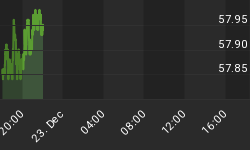Yesterday, Chicago Fed President Charles Evans gave a speech in which he said that he probably leaned towards making the first tightening early next year, as there is "no compelling reason for us to be in a hurry to tighten financial conditions." The Fed, he said, probably shouldn't raise rates until there's a "greater confidence" that inflation one-to-two years ahead will be at or above 2%. This isn't a surprising view, as Evans is the progenitor of the "Evans Rule" that says rates should stay near zero until unemployment has fallen below 6.5% (it has) or inflation has risen above 2.5%. Yes, those bounds have been walked about; in particular the 6.5% unemployment rate is obviously no longer binding (he sees the "natural rate" as being 5% again). But the very fact that he promoted a rule that set restraints on a mere return to normal policy means that he is a dove, through and through. So, it should not be surprising that he isn't in a hurry to tighten.
What I found amusing is the sop he threw to the bears. Fed speakers often try to do the "on the one hand, on the other hand" maneuver, but in Evans' case his heart clearly isn't in it. He said that "you could imagine a case being made for a rate increase in June." Notice that he doesn't say he could imagine a case being made! I am also unclear about which June he means. Does he mean...
| Q1 GDP | Q2 GDP | (thru Apr) | (thru May) | |
| June 2012? | 2.3% | 1.6% | 2.4% | 9.2% |
| June 2013? | 2.7% | 1.8% | 2.0% | 6.6% |
| June 2014? | -2.1% | 4.6% | 2.2% | 7.3% |
| June 2015? | 0.2% | 1.0% (e) | 2.2% | 5.4% |
I am not sure exactly what he thinks those darn hawks are looking at, but it seems to me the case for tightening in June is getting worse every year.
Eagle-eyed readers will notice that I didn't include the Unemployment Rate in the table above. That particular metric has been improving each year, but we know that the labor situation tends to lag the economic situation. The Unemployment Rate is a big political football, but it isn't particularly useful for policy unless you believe in the concept of a "natural rate" with respect to accelerating unemployment in the overall economy. I don't: low unemployment tends to increase wages, but has no discernible effect on consumer inflation. Moreover, it appears that the "natural rate" shifts quite a bit over time (6.5% down to 5% in Evans' formulation, in only a few years' time), making it look to me like a fairly useless concept.
Yes, of course it makes it more difficult politically to tighten when people are out of work, but since monetary policy is quite useful for affecting prices and not particularly useful for affecting growth, this should be a secondary effect at best. The Fed simply can't help the unemployed worker, except by holding down inflation for him. In the real world, of course, the Fed Chair is not going to countenance an uptick in rates when unemployment is above 5% or so.
Let me be clear: I think the Fed ought to have tightened in 2012, 2013, or 2014, and they ought to tighten now. I don't necessarily mean they should guide rates higher, but they should reduce the size of the mountain of reserves via any means a their disposal. But if you are going to argue one year over another year, I think it is hardest to argue that now is the time unless you are merely being guided by the old James Carville adage that the best time to plant a tree was twenty years ago, but the second-best time is right now.
One thing that Evans said that quickens my heart, as an inflation-watcher, is that the Fed "ought to allow" a chance that inflation overshoots 2% that is symmetrical to its chance of falling below it. While he is quintessentially unclear about how he would establish these probabilities - as I have just shown, he seems blissfully unaware that consumer price inflation is already above 2% - the mere fact of treating the costs of inflation misses as symmetrical is dangerous territory. The costs are not symmetrical. The costs of an inflation rate around 0% are very low; some frictions, perhaps, created by wage "stickiness" (even this possibility hasn't been conclusively established until inflation gets convincingly below zero). The costs of an inflation rate of 4% are much higher, since inflation has historically had long "tails." That is, once inflation goes up a little, it not infrequently rises a lot. Over the last 100 years, if you take the set of all year-on-year inflation rates above 4%, you find that about one-third of them are also above 10%. This means the costs of a loss of inflation vigilance is must greater than the costs of a loss of deflation vigilance.
You can follow me @inflation_guy!
Enduring Investments is a registered investment adviser that specializes in solving inflation-related problems. Fill out the contact form at http://www.EnduringInvestments.com/contact and we will send you our latest Quarterly Inflation Outlook. And if you make sure to put your physical mailing address in the "comment" section of the contact form, we will also send you a copy of Michael Ashton's book "Maestro, My Ass!"
















